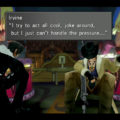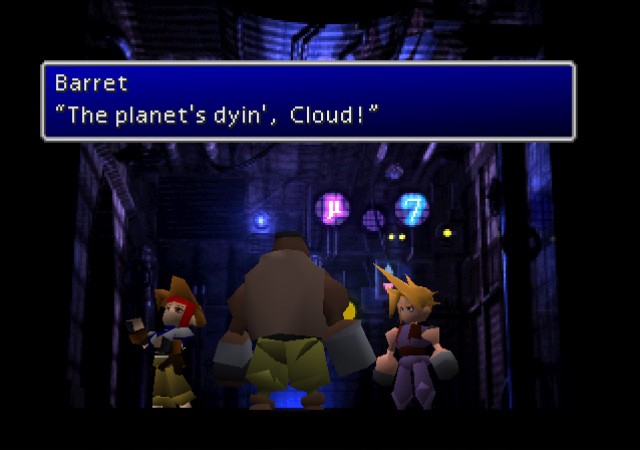Quarantine Control #141: Prince Fantasies All at Once

Christmas Day is a week from Sunday, which makes this a time to either relax or panic. The mood you’re in will depend on whether you’re the type of person who purchased all their gifts early, or someone who waited until a later time like a certain someone who shall not be named. There’s room in between there, too, for anyone who finished buying presents but is wondering if they got all the right ones. It’s a fun time of the year for kids and some people, but certainly not everyone.
Geoffrey Barnes
Everything Everywhere All at Once (2022)
Source: Showtime on Demand
Episodes: 1 movie
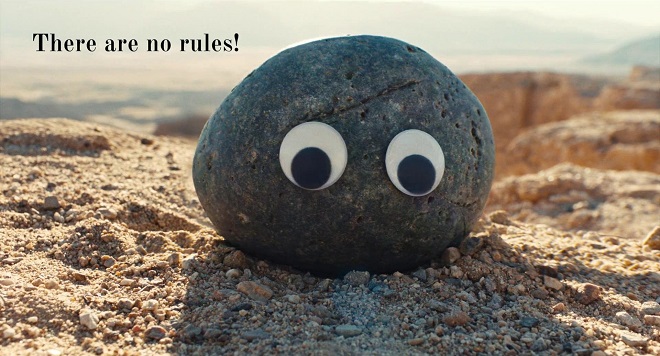
I had a difficult time not hearing about the existence of Everything Everywhere All at Once as someone who halfway follows movies, thanks to the constant number of positive discussions still happening on certain corners of social media. This kind of word of mouth was responsible for the movie’s success during the theatrical run, thanks to the movie’s intriguing concept, largely Asian cast (still too rare for a Hollywood film), and the aesthetics. Now that its time in most theaters is over, I finally had a chance to check it out on Showtime thanks to having it free for a week, a worthwhile present after dodging spoilers for so long. (Not that doing so is too difficult for anything that isn’t a Marvel film.) I have to say that it’s just as good as I’ve heard.
The movie begins in an innocuous-enough manner, the focus being on the laundromat owned by a Chinese-American family. Evelyn Quan Wang (Michelle Yeoh) is given the largest focus, joined by her husband Waymond Wang (Ke Huy Quan) and their daughter Joy Wang (Stephanie Hsu). It’s all innocuous enough at first, with the Wang family dealing with the kinds of problems business owners tend to have, like managing taxes and finances to keep the laundromat open. They also deal with more Asian-centric family issues, like Evelyn’s desperation to convince Joy to be as perfect as she can. But the story seriously kicks into gear when Evelyn is informed of the multiverse. I couldn’t possibly go any further into the story details here, because the movie is far more rewarding when you know little about the themes it will eventually tackle. It, by the way, tackles a lot.
It is worth noting and praising, however, just how interested this movie is in tackling the multiverse compared to others that feature the concept, including the other multiverse movie this year. (You know the one; it’s right in the title.) The concepts for how specific universes work compared to others tend to be unique and unexpected, but again, I won’t describe them. I also won’t encourage anyone to Google what the hell I’m talking about here, but I admire how the Daniels (directing and writing duo Daniel Kwan and Daniel Scheinert) figured out a way to feature a large number of alternate universes in a two-hour-and-20-minute film and ensure that none of them feel overutilized or underutilized.
The acting is also incredibly well done. Michelle Yeoh is great as Evelyn and the alternate universe versions of her featured, not that I expected otherwise considering her repertoire and the roles I’ve seen her in. But I was most impressed with Ke Huy Quan. I hadn’t seen him in a movie since The Goonies and Indiana Jones and the Temple of Doom, two movies in which he was still young, the latter film still fresh in my mind after finally getting around to all the Indiana Jones films in August. He’s incredible here, and as I said in this blog’s most recent Naughty and Nice feature, and I’m glad he’ll soon be in more roles following his comeback. This was also the first opportunity for me to see Stephanie Hsu in a big role (as opposed to her considerably smaller one in Shang-Chi and the Legend of the Ten Rings), and she’s also great. Jamie Lee Curtis also puts in an excellent performance, though I won’t say anything more about her role.
It’s perhaps because I’ve been watching a lot of franchise films recently, both inside and outside superhero stuff, but it’s nice to see a self-contained film that isn’t an intense and historical drama. It’s all too easy to see where a potential franchise could go with the multiverse concept, but the Daniels and A24 were merely concerned with telling a central story in Everything Everywhere All at Once. That’s a catalyst of the movie somehow made on a mere $25 million budget that easily profited, but it’s the kind of movie not commonly seen for those with a significant nerd audience in addition to a general one.
It was only upon starting this miniature review here that I realized how difficult it is to write a review of this movie, because it’s tough to talk about the story without spoiling it. I could have written a spoiler review instead, but that would have been too long for a post that I merely wanted to consist of my short thoughts as part of this dear Quarantine Control feature you’re hopefully and thankfully reading right this moment. Hopefully I got the point across that I enjoyed the film, enough to list it as one of the best I’ve seen in the last decade. I hope the future for the Daniels is bright.
Angela Moseley
Today marks the day I’ve officially burned through my entire backlog of writing for Quarantine Control. It’s okay though. I’m on break from streaming until mid-January, and I’m done with contributions to Naughty and Nice for 2022. Plenty of time to create a new writing buffer for this column. (Hopefully.)
Final Fantasy VIII Remastered (2019)
Source: Square Enix
Episodes: 1 Video game, no more suffering
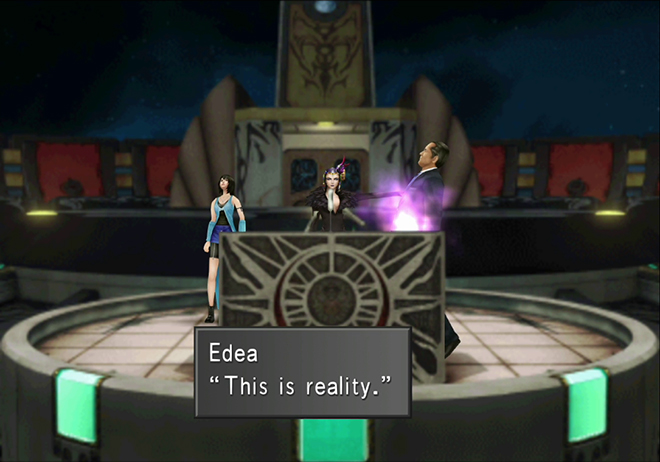
I finally finished Final Fantasy VIII on September 12. Honestly, if I didn’t need to take several emergency breaks from livestreaming, I probably would have finished the game two weeks sooner. While I’m glad I played such a controversial entry in the series, I understand why it is a love it or hate it type of game. As a gamer, you either find the system Square created to be a breath of fresh air waiting to be exploited, or you loathe it because it breaks traditional turn-based systems.
I vented my frustrations with the Draw and Junction system in Quarantine Control #120. On the upside, I finally got my act together and found a good guide for junctioning all the late game magic I’d saved up. The difference between using this type of set up, versus letting the game choose magic for me was astounding. I went from having to rely on the remaster’s cheat mode to survive to being able to steamroll most of the enemies. In other words, the game’s auto-equip feature sets unsuspecting players up to fail. Imagine if you used the auto-equip feature in another Final Fantasy and the game selected the worst armor for your characters. This is despite having better armor in your inventory. That’s essentially Final Fantasy VIII‘s auto-equip feature. It is designed so badly that it shouldn’t even be an option.
Another area of disappointment is the Guardian Forces (GFs), better known as summons in other Final Fantasy games. For me summons have always been a cool factor in the franchise. They usually serve as a reliable way to deal out massive amounts of damage a few times per battle, or they can protect a party for a set amount of time. Again, Final Fantasy VIII‘s approach gives you the trappings of a traditional Final Fantasy, but the execution is so very different. When a character is properly junctioned, GFs as summons are useless. Their real value comes from them learning spells and abilities that can be equipped to a playable character. These abilities are an effective replacement for the actual magic that needs to be junctioned instead of cast. The game is incredibly cryptic and does not make this fact evident. (Perhaps it’s buried in menus, magazines, or in-game exams, but one shouldn’t have to go reading easy-to-miss in-game manuals to figure this out.)
Once the Junction and Draw system clicks, gameplay can be enjoyable at times, but it’s not my preferred way to play an RPG. I shouldn’t be punished for wanting to use magic in a game. The fact that GF abilities are effectively replacements for magic should be made clear early in the game. This is definitely an RPG for people who like systems that can be broken or enjoy wild deviations from the norm. I admit I might be a bit too rigid in my own tastes.
Final Fantasy VIII is weirdly convoluted at times, but the overall story is fascinating. I can see how parts of it can be considered forgettable. We have a largely urban sci-fi fantasy with a small cast of characters. Sure, the surface of the story is fairly rote. Stop an evil country from dominating everyone else. Things become weird when sorceresses, body snatching, and time travel are involved. Like the original Final Fantasy, there is a stable time loop. That’s one cool callback to an older game in the franchise.
The story’s main focus is on the budding love between Squall, who desperately wants to be seen as a standoffish loner and the very affable Rinoa. If I’m being completely honest, Squall was difficult to like as a main character. Kudos to Square Enix for capturing the essence of a moody teenager, I guess. Speaking of characters, Selphie wins as the best character in my humble opinion. The problem is that getting to know the rest of the cast better is locked away behind very optional side quests. I honestly wish getting to know the rest of the cast was better integrated into the main game. Though I do like the twist with Laguna and Julia, and their children.
Overall, I’m still down on Final Fantasy VIII even after finishing it. Again, this is a title that sets gamers up for failure, especially if they’re expecting a traditional JPRG. Had it not been for help from the Twitch chat, friends, and game guides, I would have quit playing this mainline entry without ever seeing the ending. Still, it’s another game in the franchise that I can say I finished. Liking it is another matter entirely.
Joseph Daniels
When last week I covered the first of the three big budget Narnia movies currently available on Disney+, I suggested that Prince Caspian was where things usually go wrong when adapting the Narnia series. I don’t think the problem is necessarily with the story itself, not completely. Part of the problem seems to also be with audience expectation. The first film was full of wonder and whimsy and the second film is a darker and much more dangerous tale, and maybe the audience wasn’t ready for that.
Out of all of the books in the series, it’s the first one, The Lion, The Witch and the Wardrobe, that seems to be the one that everyone’s familiar with and which is the one everyone wants to see. I really think that a lot of the box office earnings from the first film were people already familiar with the story and wanting to experience it again before jumping off the series completely and never coming back. The attitude seems to be, “Wait, what other Narnia stories?” The ones that do stick with the series go into Prince Caspian with no clue what’s going to happen, but maybe are expecting another adventure and another dive into the wonder that is Narnia itself.
Prince Caspian (2008)
Source: Disney+
Tigers?: Background extras only; much more plentiful than the first film
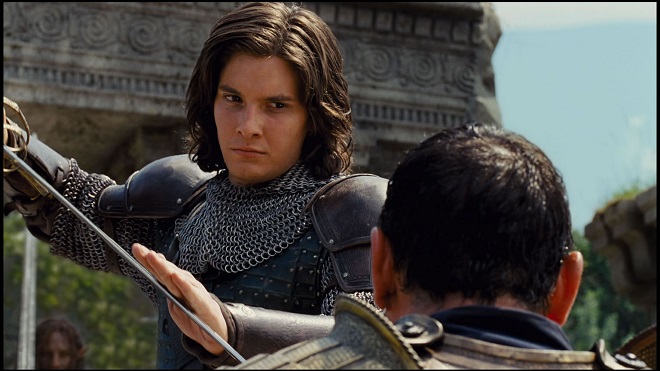
Unfortunately, that doesn’t seem to be how Prince Caspian was written. The fact that the Pevensies return in this sequel is a good thing, since the audience will be familiar with them, but this is more the story of Prince Caspian than it is the Pevensies. Caspian has a lot more agency in the early part of the story than the Pevensies do until they all meet up at roughly two fifths of the way through the film.
This is likely one of the reasons why audiences might not be able to engage with Prince Caspian. They might not care about a new set of characters, especially human characters, in a setting that was supposed to be full of talking animals and fantasy races, and where humans were considered incredibly rare. Most of the characters from the first book are long dead with the exception of the Pevensies and Aslan. It’s possible that C. S. Lewis didn’t do enough to make us care about the second book’s characters, or it’s possible that the audience just didn’t resonate with the type of story Lewis was trying to tell.
The first book had definite parallels to the Biblical story of Jesus sacrificing himself, a story which even non-believers can recognize at a glance, and which is easy to turn into a great adventure story for children. The second book seems to be telling a story about having faith when the world is telling you not to, although it might fly under the radar of anyone who isn’t already a Christian.
The film does at least try to bring back a sense of wonder. The Pevensies’ return to Narnia tries to be as magical as could be expected. The four children have been struggling to come to terms with living in our world after spending so long in Narnia, but then they feel the pull of magic in the London Underground as the world dissolves around them and leaves them in a cave by the shore. They quickly figure out that they’ve come back to Narnia near their old home of Cair Paravel, which is now lying in ruins after more than a thousand years.
The humans found in Narnia during the story are said to be invaders from another land, and it’s revealed at the end of the film that they’re actually descended from people who crossed over from our world. That doesn’t mean that I can’t still feel as if the film lost a lot of the magic the first film had. There’s just too many humans in Narnia, Aslan has been missing for centuries, and many of Narnia’s animals have lost their sentience and become nothing more than beasts. There’s a scene with a bear, feral and wild, charging at Lucy and needing to be killed by Susan, and it’s upsetting for Lucy to find out that things in Narnia aren’t as they once were.
The absence of Aslan feels like an attempt to invoke the Christian belief that God’s physical absence in our world is part of a much greater plan. However, the details of that plan are always up to interpretation, and it’s easy to interpret wrong, which I imagine makes it especially hard for believers to keep the faith. In Narnia, the absence of Aslan has been very hard on everyone, especially with tribes of humans slaughtering them. The blowing of the horn from the first film is a last act of desperation and is what brings the Pevensies back from London.
By the way, the arrival of Reepicheep into the story is probably one of my favourite parts of the film, for I’m quite fond of the mouse.
It’s not like the first film wasn’t a war story, it very much was. But there was also a sense of exploration about the film, of wonder. There’s less of that in Prince Caspian, instead focusing on the battle between Narnians and their new long time foe. I think the story is harmed by Aslan’s frustrating absence. He was able to be present as much as he was in the first film because he was always bound by the deep magic, so he couldn’t just use his great amount of power to defeat the White Witch whenever he wanted. With the magic fading from Narnia, maybe it’s better for Aslan that he’s absent for most of this film. It would not do for Narnia’s version of God to be depowered and helpless. Even when he was bound and shorn in the first film, there was still a plan in play, and the deep magic was destined to not forsake him.
Things unfortunately don’t seem to be going well for the Narnians in the second film due to their lack of faith and their need to take matters into their own hands. This message is likely not one which would resonate with the average viewer, not one used to movies and video games where the triumph of the human spirit is the main reason for the success of the main characters. That and the main antagonist has been God or an equivalent being in an interestingly large number of them.
An attack on the castle of Caspian’s wicked uncle Miraz does not go well for the Narnians, mainly due to Peter not trusting that the absent Aslan has a plan and coming up with a plan of his own, then Caspian breaking from Peter’s plan and improvising, and things look low for our heroes.
There is something that I feel the film does well. It makes a lot more use out of the gifts that Father Christmas gave the Pevensies. The horn was what brought them to Narnia, and the weapons Peter and Susan – especially Susan – received were put to good use. Susan only shot, I think, one arrow in the entire first film, and they actually added several scenes of her firing off arrow after arrow in the second film to make up for how the author treated her. Indeed, the Walden Media version of Susan was Katniss Everdeen long before Katniss was ever a thing.
Another thing I like is that this time, the tigers are on the side of Narnia. None of them are the inbred white tigers from the first film, which might explain why they’re smart enough to fight on the proper side. There is also at least one squirrel with a minor role, so you might be forgiven if you think that Rusty and I had a small part in fighting for Narnia this time around.
It’s hard to imagine Aslan’s plan was for a bunch of humans to cross over from our world and overrun Narnia and bring it to the brink of destruction, letting his people suffer for more than a thousand years. So many people were killed and Narnia had changed for the worse. Did Aslan truly want this to happen, and for what?
Maybe this is why Prince Caspian is not held in as high esteem as the first book in the series. The lesson here is that bad stuff happens for a reason and we have to have faith, but that’s not satisfying, both narratively and just in general. Aslan rushes in to save the day at the end, but only after Lucy seeks him out, and that’s after hearing for most of the movie that the lion has largely abandoned Narnia to its fate without offering much comfort to its people that everything is going to be alright.
This is also the last time Peter and Susan journey to Narnia, for they’ve learned all they can from that world. I feel like they could still be of use to Narnia as seasoned warriors and wise rulers, but I guess it comes back down to what Aslan was saying when he returned, that nothing ever happens twice. Narnia might not need all four Pevensie children every time, but if you ask me, I don’t know if I’d be willing to leave such a magical world behind, especially knowing that my younger siblings will still have business there in the future. I also don’t know if Narnia should be without Susan or Peter. That would be like telling the best plumber in town that they’ve learned all they can, so they should retire. No! They should work their chosen trade for a number of decades until they’re satisfied and are ready to retire! You can’t tell me that Peter and Susan are ready to retire after only two trips to Narnia!
I guess it all comes back to the book’s lesson of faith. Peter and Susan are trusting that there’s a plan, and that’s why they’re okay with leaving Narnia forever. I just hope that they always remember their time there and don’t find themselves forgetting like they did when they spent years in Narnia and didn’t remember that they were never actually born there.
There was one more movie in the series that Walden Media started, then the movies went into indefinite hiatus, but I’ll cover that next week.
This is yet another reminder that everyone should get their shots if plans are already in place to see the folks over the holiday season, assuming you haven’t already gotten them or live near or with them. It’s also good that the White House has restarted the program of sending out free at-home COVID tests, because they know what’s about to happen.

